If you are the proud owner of a Great Dane, then you will want to make sure that you start training them as soon as possible. What is puppy respect training for Great Danes? Let’s dig in.
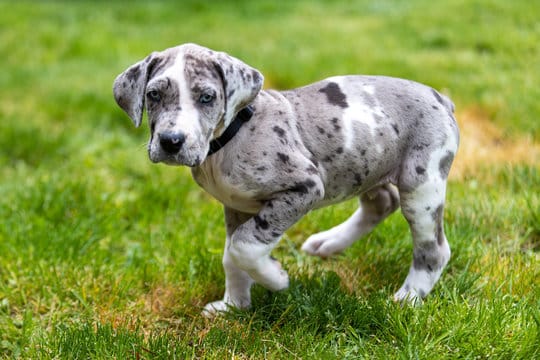

These dogs grow to be large, strong, and powerful! It is important that they learn how to behave themselves early on. In this blog post, we will discuss some respect training tips that will help get your pup on the right track!
If your dog is biting, stealing, running away, pulling, lunging, dangerous, or out of control there may be things you are doing (or not doing) in your own home that are making these things worse.
Puppy Socialization
Puppy Culture: A Way to Socialize from the Start
Puppy Socialization Guide
How to Crate Train a Great Dane Puppy
We are here to help you!
Read on for more practical tips including Great Dane puppy respect training, basic commands, advanced training, and more.
WHAT IS PUPPY RESPECT TRAINING?
Puppy respect training is, in essence, obedience training.
Keep in mind that a Great Dane is not going to respect you if you rely on harsh, forceful, intimidating, or punitive training techniques!
These ‘old school’ training ideas (often marketed as a way to establish your rank as the ‘pack leader’) may produce quick results, but in the long run, will do more harm than good.
DOES YOUR DOG SEE YOU AS HIS RESPECTED LEADER?
The day that you bring your dog home is the day that you should start establishing this positive relationship.

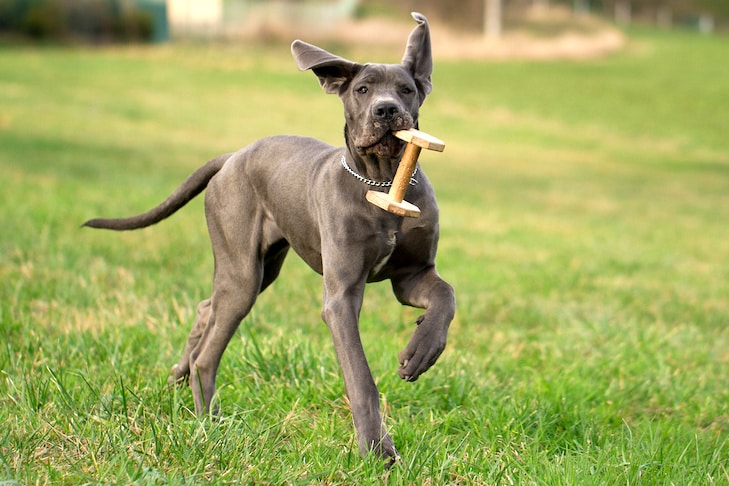
PROTECT – TRAIN – LEAD – COMMUNICATE
Protecting your dog means making sure that their health, comfort, and physical and emotional needs are met.
Training your dog means that you spend time teaching your young pup what behaviors you like and don’t like.
Leading your dog means that you teach, guide, and lead with respect. The unbreakable bond you build with your dog by being a positive, trustworthy, and benevolent leader will pay off!
Communicating with your dog means telling them everything they need to know to make mature decisions: yes and no.
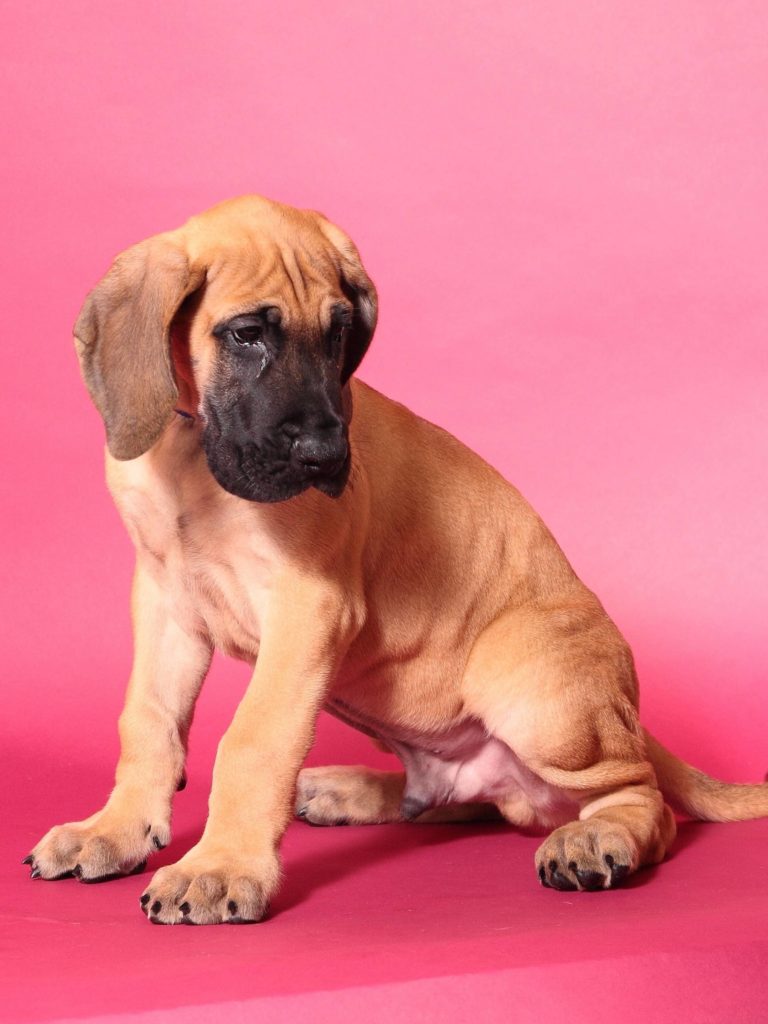
Get the family involved in teaching your dog!
Other members of the family can take advantage of your puppy’s natural desire to connect with others and feel safe.
Training, praise, treats, toys, play, fun, and cuddles are amazing ways for everybody involved to reinforce engagement and good obedience skills.
Establish house rules for your dog and encourage everybody to follow them.
HOW TO MAKE YOUR DOG ENGAGE WITH YOU
We recommend that you spend quality time with your puppy focused on showing them new places, things, sounds, textures, and experiences. Find things that your dog loves and use them as a reward!
By sharing these experiences together, your puppy will come to learn that you can be respected and are a source of good things.
It’s important that you teach your new dog what you expect of them, and teach them to be calm, confident, and cool in a scary, busy world.
How do you discipline a puppy but not be mean?
All puppies are going to do things they should not do! Don’t give them the wrong idea by being forceful and intimidating, or by accidentally rewarding the wrong things.
Puppies, especially as they mature, will jump, steal, pull, whine, bark, chew, and run away.
Many times, the best correction is the most simple! Removing your attention from your puppy is one of the most powerful early forms of ‘NO’ that puppies understand.
Dog problems
The truth is, those behaviors are normal, natural, and VERY rewarding to them! That doesn’t mean, however, that it’s ok for your dog to be out of control.
Great Danes are sensitive animals.
While correcting your dog it is important to note that if you want to prevent future behavioral problems, you don’t have to be mean or harsh.
A few rules and boundaries, paired with positive teaching using food rewards is an amazing combination.
Train the dog to repeat things that you want to see by using a lot of positive reinforcement. When you do this, the corrections that you have to use make much more sense to your dog!

BALANCED TRAINING
Balancing your dog training and your dog’s behavior is very simple. Balanced dog training for Great Danes is humane and science-based!
Discipline and corrections that you might use for a Great Dane puppy include:
- Reducing their access to something
- Redirecting them to something appropriate
- Preventing the behavior by managing the environment
- Walking away and removing your attention
- Saying ‘AH AH’ or ‘NO’ to stop behaviors that could be dangerous to them
- Popping their leash with a quick pop to ‘snap them out of it’
Once your dog is older, appropriate corrections and communication may be implemented with the use of tools such as prong collars and E-Collars, following a conditioning phase.
E-Collars and prong collars for Great Danes
We highly recommend doing a lot of research on these tools prior to using them! We have a huge collection of E-Collar resources to help. For more information on E-Collar conditioning, read our blog post!
BAD DOG TRAINING ADVICE
Never hit, kick, pinch or pin your dog to the ground. If you think you have to do that to get control of your dog or to ‘be the pack leader’, there are bigger issues at play. We highly recommend that you seek out the help of a highly qualified positive-balanced dog trainer.
If you lead with punitive punishments, chances are that your dog will redirect their own building aggression, anxiety, and frustration into other training problems (or worse, onto you!).
Positive Reinforcement vs. Corrections in dog training
Positive reinforcement (R+) is the best way to teach your dog new skills.
Sit, down, wait, leave it, stay, heel, and come are all things that are easy to reinforce with treats, praise, play, fun, freedom, and access to things.
Training sessions should be short, fun, and always end on a good note!
Bad behaviors, on the other hand, require that you work on two things:
OPTION 1 – MANAGEMENT & PREVENTION
This option is helpful for things such as chewing, biting/aggression/resource guarding, fence jumping, and destruction, where the problem is both dangerous and hard to control.
OPTION II – CORRECTIONS AND COMMUNICATION
Corrections and communication are helpful when the dog knows what they should be doing instead. This can be used for things such as running out of doors, fence jumping, stealing food off the counter, and pulling.
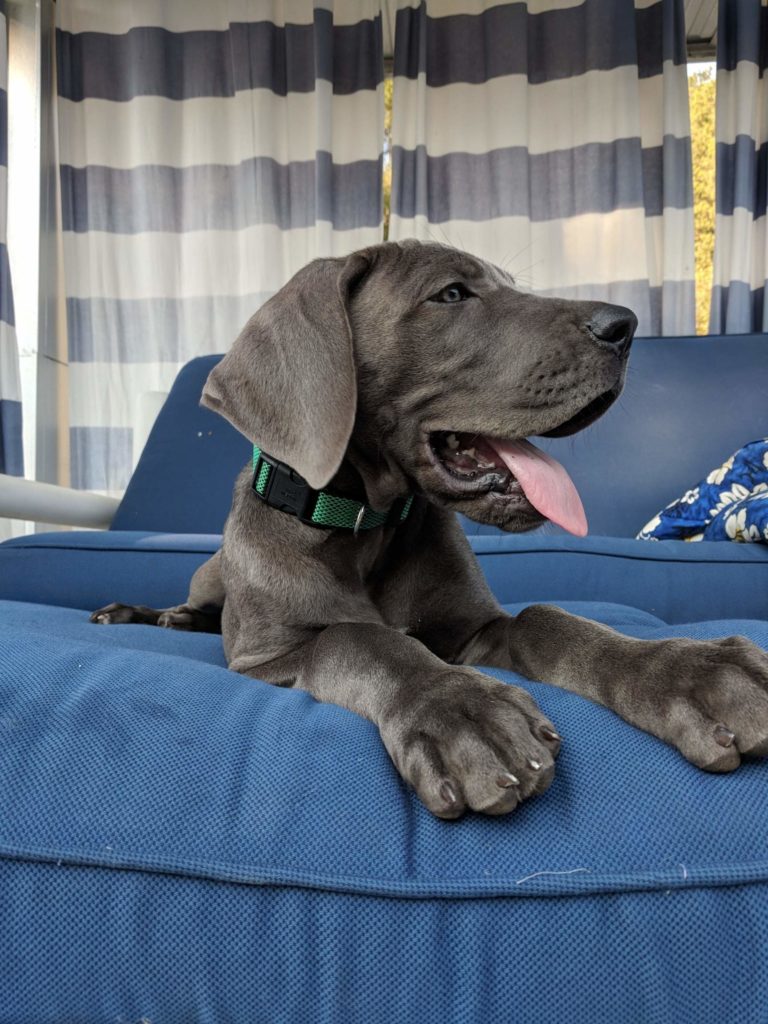
Some trainers will tell you never to use corrections or say ‘NO’ to your dog.
They will tell you to only use ‘option 1’.
These trainers often claim to be ‘positive only’ or ‘force-free’, and they rely heavily on physical restraint and management.
Managing movement, freedom, and access to the world so that a dog never has to be ‘corrected’ is, for many dogs, restrictive, frustrating, and inhumane.
This is why we recommend a much more comprehensive and fair balanced training approach that relies heavily on positive experiences, the relationship that you have with your dog and transparency about what your dog can and cannot do.
Should I use a spray bottle to discipline my Great Dane?
We do not recommend giving even a ‘quick squirt’ with a squirt bottle. This form of training seems ‘gentle’ but is not harmless.
Training Mistakes
What is Great Dane Dominance Training?
The last thing you want is for your 140lb giant dog to be afraid of water! Handling, spray medications, hoses, and baths are just some things that your giant breed dog may resist if you utilize this method to punish your dog.

HOW DO I GET MY DOG TO RESPECT ME AS THE ALPHA?
The entire concept of the ‘alpha dog’ is deeply flawed. It was based on poorly done, outdated studies of captive wolves, and the original findings were actually retracted!
Run from any dog trainer who is still telling you that dog training boils down to a power contest between you and your pet!
You do need to provide guidance, boundaries, leadership, exercise, and training, however.
Several short, fun teaching sessions each day paired with structure, routine, and fair corrections will always be the way to go. If you want your dog to respect you, build your relationship on trust!
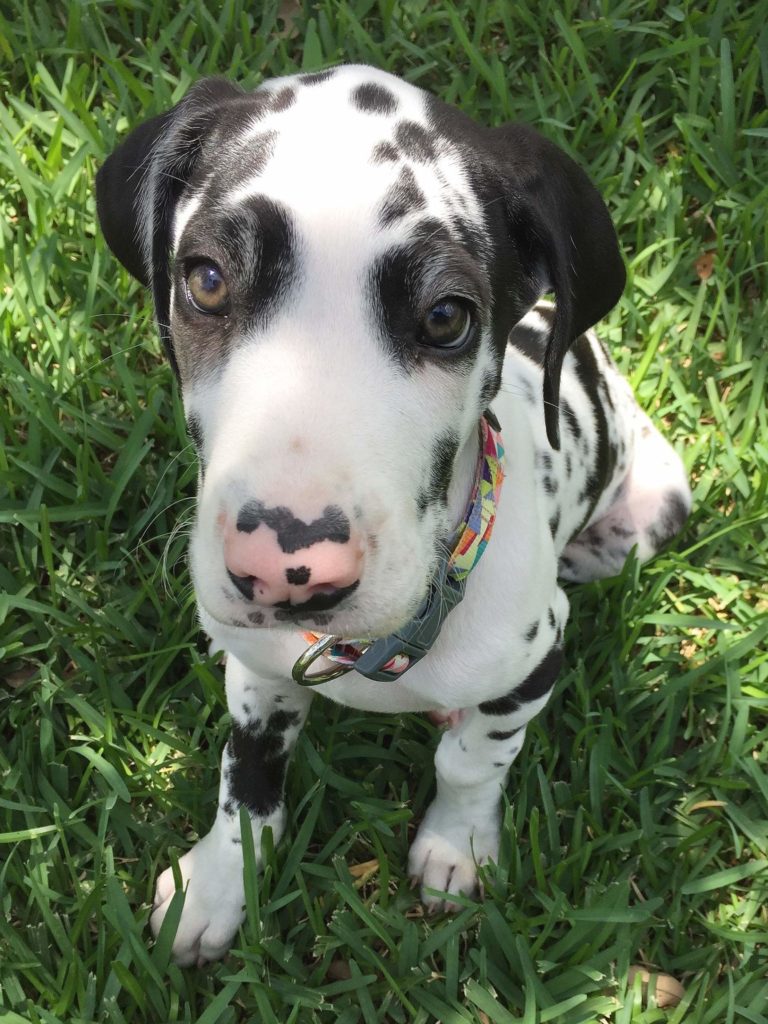
HOW TO GET YOUR DOG’S RESPECT
Here is our list of tips for getting your dog’s respect:
- Honor their body language: learn what they are telling you, and be open to listening! Make them feel safe with you.
- Encourage them to be confident. Push them a little bit out of their comfort zone, but not too far. Then reward them like crazy!
- Ask them for eye contact and give them lots of attention for it.
- Reinforce and reward all good behavior.
- Stay calm. Don’t resort to aggression or frustration while leading your dog.
- Make sure your dog is getting plenty of mental and physical enrichment.
- Don’t baby your dog! Contrary to popular belief, Great Danes can play in the mud, run, jump and play.
- Spend more time saying YES than saying NO to your dog.
- Remember that most behavior problems stem from boredom, anxiety, frustration, fear, habit, and hormones. If you are frustrated, that’s a sign that your dog is as well!
- Have fun with your dog. Be the BEST part of their day!

IS DOG RESPECT TRAINING HUMANE?
You cannot force a dog to ‘respect’ you, and certain things will for sure erode trust. By being calm, trustworthy, and thoughtful you are being a humane dog owner!
As a matter of fact, one of the most humane things you can do is to train your dog.
Well-trained dogs that are taught both YES and NO will be well-balanced, confident, and resilient.
Great Dane Dogs + Freedom to make choices
A dog that can be trusted off-leash enjoys freedom and autonomy that other dogs can only dream of.
A dog that can safely go on a walk anywhere will quickly have access to enriching socialization experiences and new environments.
A dog that has been taught that it’s never acceptable to jump, lunge, steal or run out of a door is a dog that is being kept safe.
Using balanced training methods for your Great Dane puppy is the best, most fair, most humane and most effective thing you can do for your dog!
SIGNS THAT YOU NEED OBEDIENCE WORK: RUDE GREAT DANE BEHAVIORS
Bad behavior is frustrating to you and dangerous to others. It is important for dog owners to understand how to teach and correct their Great Danes before the problems become a dangerous uphill battle.
The three-step process for solving training issues:
1. Manage2. Teach & Reward
3. Communicate or Correct
RUNNING AWAY
Does your Great Dane puppy run away from you and refuse to come when called?
We recommend the following:
- Don’t let your dog off-leash until they have excellent recall. (Manage)
- Use dog treats, praise, and play to make it fun to come back. (Teach)
- Practice recall in low distraction areas, then work your way up
- Use a long Biothane leash when out walking, and practice recall
- Never chase your dog or scold them for running away. This is the wrong approach that makes recall and running away worse!
- E-Collar train for off-leash reliability anywhere you go (Communicate)
STEALING FOOD
If your Great Dane likes to steal food from people or from the counter, they risk harming themselves with toxic or dangerous foods. Dogs love this game and are very rewarded by it. Despite what you may think, they don’t feel guilty about it but they ARE afraid of your reaction!
- Keep the counters clear of tasty food they may want. (Manage)
- Teach ‘leave it’ (Teach)
- Teach ‘place’
- Implement an appropriate correction
JUMPING ON PEOPLE
Jumping is dangerous because a Great Dane can seriously hurt somebody.
How to Stop a Great Dane from Jumping Up
- Make your dog wait before being pet so that you can reward calm behavior with attention.
- Teach ‘place’
- Teach ‘off’, ‘sit’, and ‘leave it’
- Correct the behavior, when appropriate
REACTIVITY
Telling ‘off’ people & dogs
A Great Dane dog that displays growling, lunging, barking, or aggression is a dog that requires obedience training.
Is My Great Dane Being Aggressive?
- Teach and reward sit, down, leave it, wait, stay, come, off, and place.
- Make sure your dog feels protected: don’t make a habit of exposing your dog to situations where such reactivity puts them in an out-of-control headspace.
- Make sure all family members understand how to manage reactivity and use training and counter-conditioning to reduce it.
THE BEST DOG EVER
Everybody dreams of having the perfect pet. A dog that listens has respect, and has developed a strong bond with its owner is wonderful. Dogs that are well trained have a lot more freedom, choice, and autonomy, too!
Puppies vs. Adult Dogs
It’s important to remember that an adult dog will be more mature than a young one; many ‘problems’ are a simple factor of immaturity, missed teaching opportunities, and a lack of experience!
Bad behavior in dogs also happens often because of boredom, anxiety, or poor leadership (and teaching).
Hopefully our blog post today will help you get on the right track with your dog!


Leave a Reply